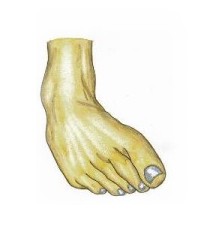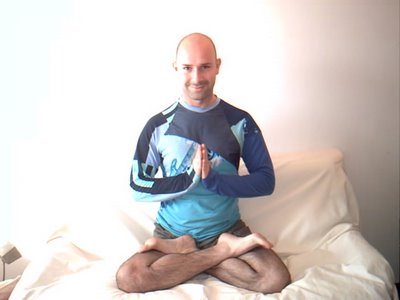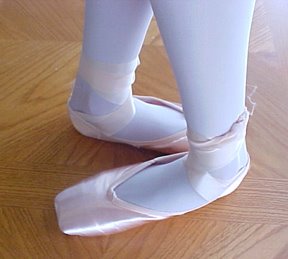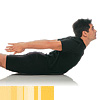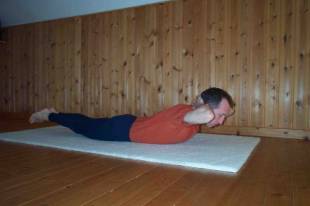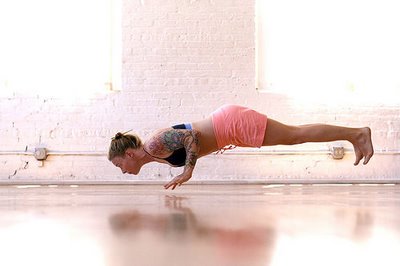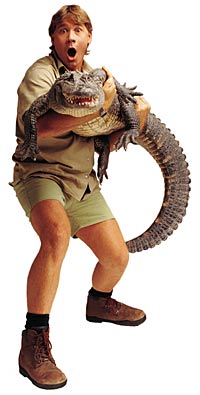Trust Your Knee to Tree
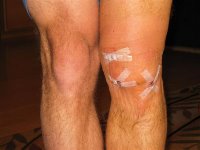 Physical therapy for my post-surgical knee began Saturday.
Physical therapy for my post-surgical knee began Saturday.I received some wise words and instruction, for which I am grateful, from my PT guy, Brian.
Some of what he gave me is yoga. Here goes. This is what he said:
1) Let it heal. It's good that it's moving. But don't over-do it.So what's involved in "proprioreceptive exercise" you ask?
The doctors had their surgical tools moving around in there. So now it's got to heal.
He pointed to the three scabs on my knee skin and said, "Hey, see those? They haven't healed on the outside. You can be sure you're not done healing on the inside."
2) One of our big goals is to get the inflammation and swelling out of the knee joint. As long as it's there, tissue is irritated.
(I'll tell you in my next Daily Yoga Tip the "yoga" he wants me to practice to get this swelling gone. Yes, I mean in addition to the usual MICE - movement, ice, elevation, and compression.)
3) I was so proud of the fact that I could really bend my knee.
Brian burst my bubble, telling me the next big thing is not how well I can bend it, but whether I can straighten it--really straighten it.
He surprised me by demonstrating to me that I could not straighten my right leg as well as my left. That pesky culprit inflammation is the cause. See item 2 above.
4) Strengthen your leg muscles later. Big quads are beautiful, but for now, focus on propriorecptive exercises. "These will train your brain to trust your leg again," he said.
 Tree poses. That's right. Vrksasana.
Tree poses. That's right. Vrksasana.He had me lift one foot off the ground and balance with my arms out to the sides for 15 seconds, once on each foot.
Then, instead of practicing with my arms out, he had me cross my arms in front of my chest and touch the opposite shoulder with my fingers. I held these for 15 more seconds, on each side.
Finally, the big kahuna. I did vrksasana, both sides, 15 seconds, with my eyes closed.
My foot wobbled and I could hear all sorts of popping and clicking. Apparently my brain hasn't been trusting my leg for quite a while.
I've known for a long time that tree pose is good for balance and strengthening legs. I've known it's good for avoiding twisted ankles.
But I've never really understood that I was training my brain to trust my leg.
 This is a problem I'd like to solve for other poses, too.
This is a problem I'd like to solve for other poses, too.For instance, I can teach a whole lot of people to be in the other tree pose, adho mukha vrksasana (downward facing tree pose), hand-stand.
But I'm much less successful at teaching people to kick up into hand-stand unassisted.
I've believed for a long time it's because their brains don't trust their arms.
I'd like to figure that one out. I'm wondering what we can practice so that the brain knows the rest of the body is ready to toss the legs up over the hands. Until I do...
Don't just read about it. Get up. Experience it. Experience yoga!
Kevin Perry
www.ExperienceYoga.org
p.s., The Sanskrit Word of the Day from my previous Daily Yoga Tip was janu. Janu means knee, as in parivrtta janusirsana, the revolved knee head pose.
p.p.s., Today's Sanskrit Word of the Day is chatura. I'll tell you what it means next time.
p.p.p.s., I wrote about MICE in my Daily Yoga Tip on November 9, 2005. It's called "RICE or MICE" You can read it here.
p.p.p.p.s., We're getting ready to announce some fun free give-aways for everyone who has signed up for the Daily Yoga Tip by email. Sign up today, so you'll be the first to hear about the fabulous prize that'll we'll mail out to free, if you ask for it. And, as always, please let your friends know about my Daily Yoga Tip. They'll want our special gift, too. Thank you.
p.p.p.p.p.s., In the spirit of journalistic integrity, that picture above of the knees is not me. But my legs looked just like that a few days after my surgery.
Copyright 2006. All rights reserved, Mo Yoga LLC.
Kevin Perry
Mo Yoga LLC
1305 Elmerine Ave
Jefferson City, MO 65101
(573) 680-6737

